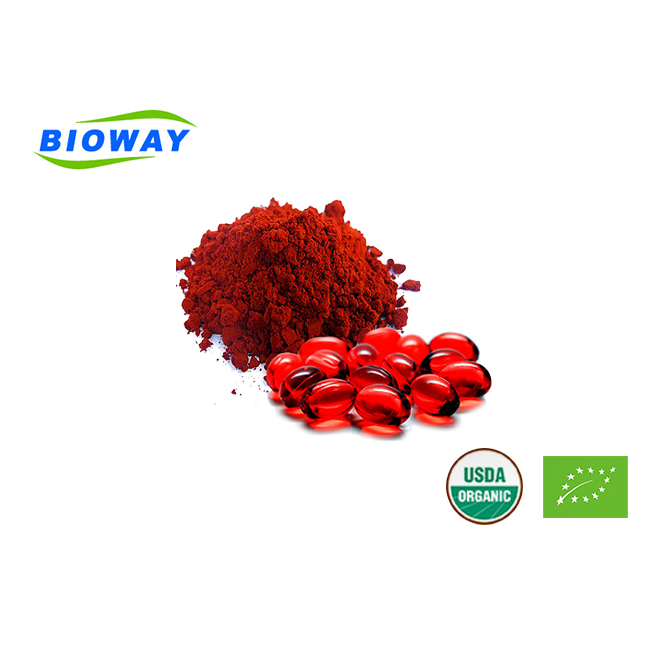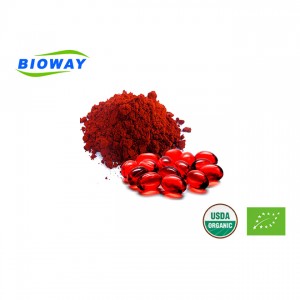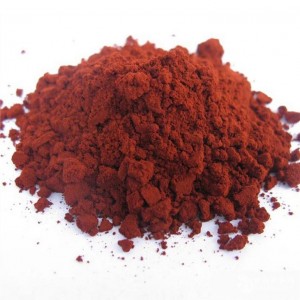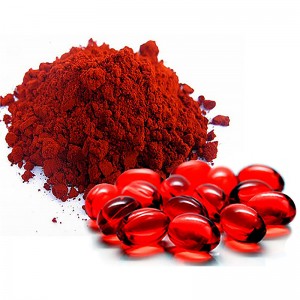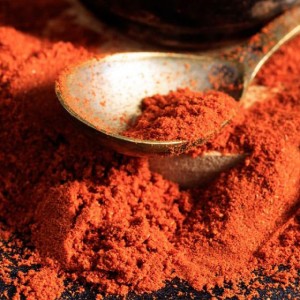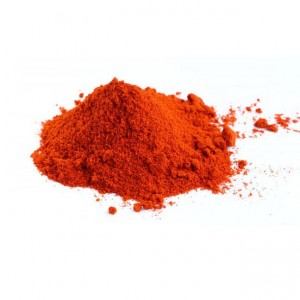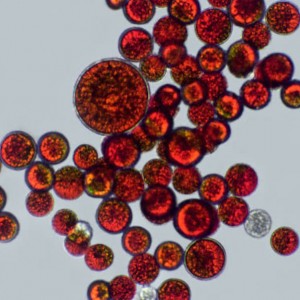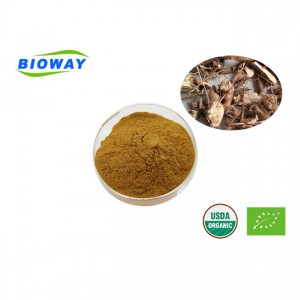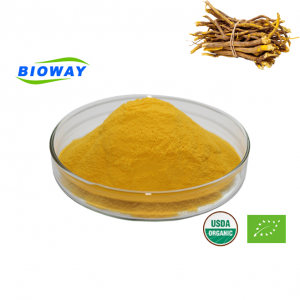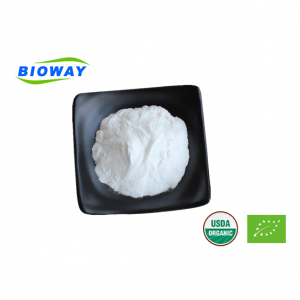Natural Astaxanthin Powder From Microalgae
Natural astaxanthin powder is derived from the microalgae called Haematococcus Pluvialis. This particular species of algae is known to have one of the highest concentrations of astaxanthin in nature, which is why it is a popular source of the antioxidant. Haematococcus Pluvialis is typically grown in freshwater and is exposed to stressful conditions, such as intense sunlight and nutrient deprivation, which causes it to produce high levels of astaxanthin to protect itself. The astaxanthin is then extracted from the algae and processed into a fine powder that can be used in dietary supplements, cosmetics and food products. Because Haematococcus Pluvialis is considered to be a premium source of astaxanthin, natural astaxanthin powder from this particular algae is often more expensive than other forms of astaxanthin powder on the market. However, it is believed to be more potent and effective due to its high concentration of the antioxidant.
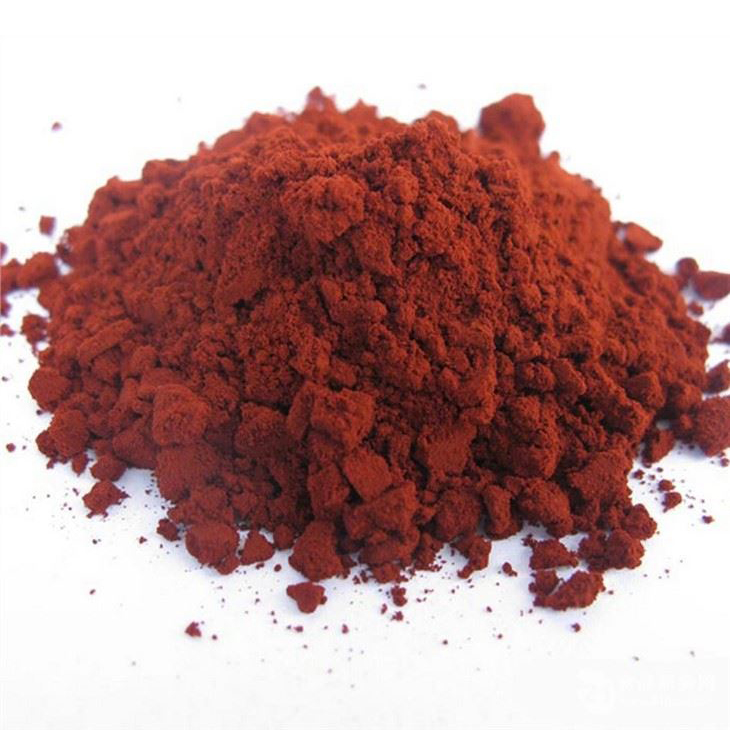
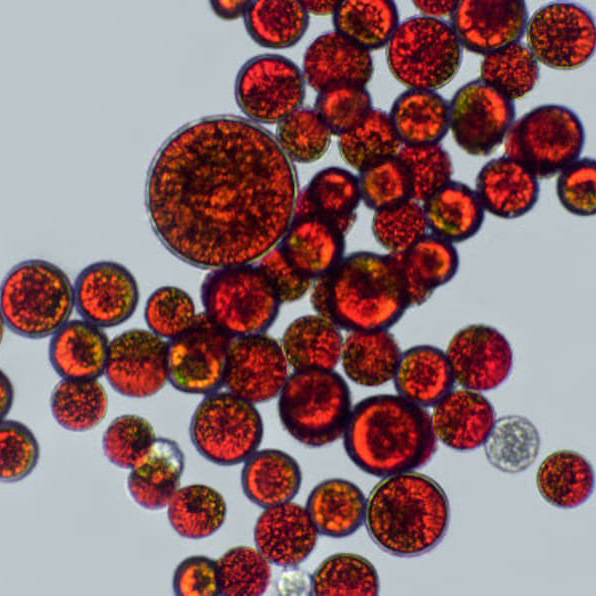
| Product Name | Organic Astaxanthin Powder |
| Botanical Name | Haematococcus Pluvialis |
| Country of Origin | China |
| Part Used | Haematococcus |
| Item of Analysis | Specification | Results | Test Methods |
| Astaxanthin | ≥5% | 5.65 | HPLC |
| Organoleptic | |||
| Appearance | Powder | Conforms | Organoleptic |
| Color | Purple-red | Conforms | Organoleptic |
| Odor | Characteristic | Conforms | CP2010 |
| Taste | Characteristic | Conforms | CP2010 |
| Physical Characteristics | |||
| Particle Size | 100% pass 80 mesh | Conforms | CP2010 |
| Loss on drying | 5%NMT (%) | 3.32% | USP<731> |
| Total ash | 5%NMT (%) | 2.63% | USP<561> |
| Bulk Density | 40-50g/100mL | Conforms | CP2010IA |
| Residue of Solvents | None | Conforms | NLS-QCS-1007 |
| Heavy metals | |||
| Total Heavy Metals | 10ppm max | Conforms | USP<231>method II |
| Lead (Pb) | 2ppm NMT | Conforms | ICP-MS |
| Arsenic (As) | 2ppm NMT | Conforms | ICP-MS |
| Cadmium (Cd) | 2ppm NMT | Conforms | ICP-MS |
| Mercury (Hg) | 1ppm NMT | Conforms | ICP-MS |
| Microbiological Tests | |||
| Total Plate Count | 1000cfu/g Max | Conforms | USP<61> |
| Yeast & Mold | 100cfu/g Max | Conforms | USP<61> |
| E. Coli. | Negative | Conforms | USP<61> |
| Salmonella | Negative | Conforms | USP<61> |
| Staphylococcus | Negative | Conforms | USP<61> |
1.Consistent potency: The astaxanthin content of the powder is standardized at 5%~10%, which ensures each dose contains a consistent amount of the antioxidant.
2.Solubility: The powder is soluble in both oil and water, which makes it easy to incorporate into different types of products.
3.Shelf stability: When stored properly, the powder has a long shelf life and remains stable at room temperature.
4.Gluten-free and vegan: The powder is gluten-free and suitable for vegans and vegetarians, making it accessible to a wide range of consumers.
5. Third-party testing: Reputable manufacturers of astaxanthin powder from Haematococcus Pluvialis may conduct third-party testing to ensure their product meets strict quality standards and is free of contaminants.
6. Antioxidant properties: Astaxanthin is a powerful antioxidant that may help protect cells from oxidative stress, reduce inflammation and support immune system function. Therefore, natural astaxanthin powder from Haematococcus Pluvialis may offer a range of health benefits.
7. Versatile use: Astaxanthin powder from Haematococcus Pluvialis is commonly used in dietary supplements, functional foods, beverages and cosmetics. Due to its potent antioxidant properties, it may be useful in a variety of applications.
Natural astaxanthin powder from Haematococcus Pluvialis has many potential product applications due to its antioxidant properties and other potential benefits. Here are a few examples of how this powder can be used:
1.Nutraceuticals: Astaxanthin powder can be added to nutritional supplements and functional foods for its antioxidant and potential anti-inflammatory properties.
2.Cosmetics: Astaxanthin powder can be incorporated into skincare products, such as serums and moisturizers, for its potential anti-aging benefits and ability to protect against UV damage.
3.Sports nutrition: Astaxanthin powder can be added to sports supplements, such as pre-workout powders and protein bars, for its potential benefits in reducing muscle damage and improving exercise performance.
4. Aquaculture: Astaxanthin is important in aquaculture as a natural pigment for fish, crustaceans, and other aquatic animals, which results in improved color and nutritional value.
5. Animal nutrition: Astaxanthin powder may also be added to pet food and animal feed for its potential benefits in reducing inflammation, improving immune function, and enhancing skin and coat health.
Overall, natural astaxanthin powder from Haematococcus Pluvialis has a wide range of potential applications due to its many benefits and versatile nature.
The process for producing natural astaxanthin powder from Haematococcus Pluvialis typically involves the following steps: 1. Cultivation: Haematococcus Pluvialis algae is cultivated in controlled environments, such as a photobioreactor, using water, nutrients, and light. The algae is grown under a combination of stressors, such as high light intensity and nutrient deprivation, which triggers the production of astaxanthin. 2. Harvesting: When the algal cells have reached their maximum astaxanthin content, they are harvested using techniques such as centrifugation or filtration. This results in a dark green or red paste containing high levels of astaxanthin. 3. Drying: The harvested paste is then typically dried using spray drying or other methods to produce the natural astaxanthin powder. The powder can have varying concentrations of astaxanthin, ranging from 5% to 10% or higher, depending on the desired final product. 4. Testing: The final powder is then tested for purity, potency, and quality assurance. It may be subject to third-party testing to ensure that it meets industry standards and regulations. Overall, producing natural astaxanthin powder from Haematococcus Pluvialis requires careful cultivation and harvesting techniques, as well as precise drying and testing processes to ensure a high-quality final product with the desired concentration of astaxanthin.
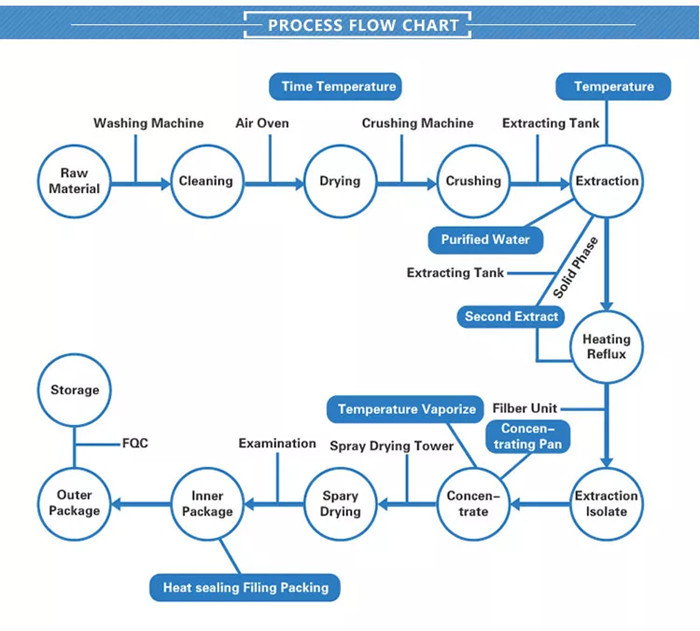
Storage: Keep in a cool, dry, and clean place, Protect from moisture and direct light.
Bulk Package: Powder Form 25kg/drum; oil liquid form 190kg/drum.
Lead Time: 7 days after your order.
Shelf Life: 2 years.
Remark: Customized specifications also can be achieved.
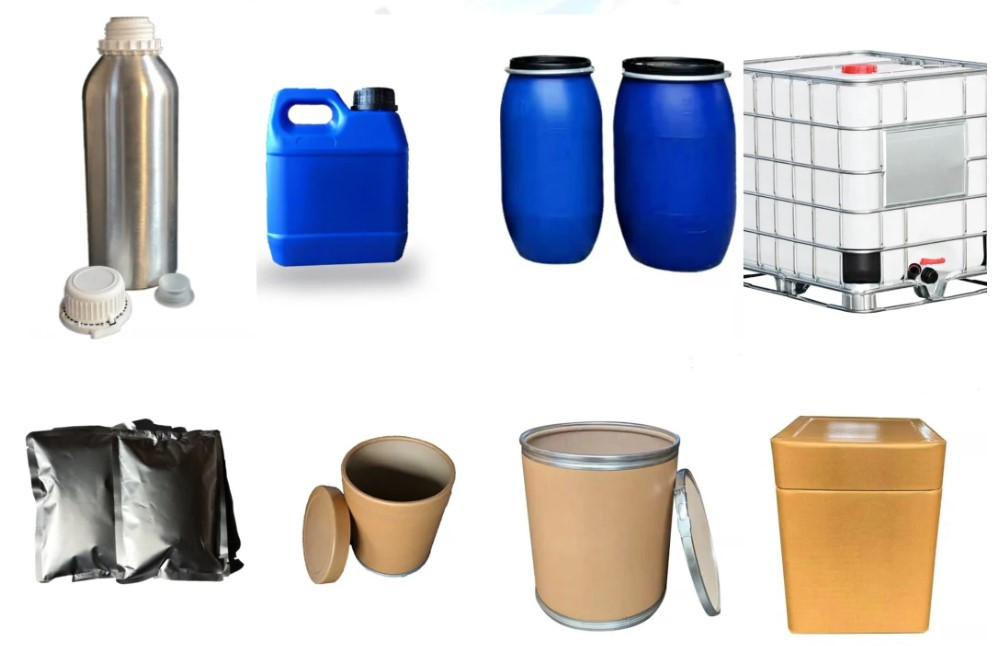
Express
Under 100kg, 3-5Days
Door to door service easy to pick up the goods
By Sea
Over300kg, Around 30 Days
Port to port service professional clearance broker needed
By Air
100kg-1000kg, 5-7Days
Airport to airport service professional clearance broker needed

Natural Astaxanthin Powder From Microalgae is certified by ISO, HALAL, KOSHER and HACCP certificates.

Astaxanthin is a pigment that can be found in some seafood, especially in wild salmon and rainbow trout. Other sources of astaxanthin include krill, shrimp, lobster, crawfish, and some microalgae such as Haematococcus Pluvialis. Astaxanthin supplements are also available in the market, which are often derived from microalgae and can provide a concentrated form of astaxanthin. Nevertheless, it's important to note that the concentration of astaxanthin in natural sources may vary significantly, and it's essential to be cautious when taking supplements and consult with a healthcare professional before doing so.
Yes, astaxanthin can be found naturally in some seafood, such as salmon, trout, shrimp, and lobster. It is produced by microalgae called Haematococcus Pluvialis, which is consumed by these animals and gives them their reddish color. However, the concentration of astaxanthin in these natural sources is relatively low and varies depending on the species and breeding conditions. Alternatively, you can also take astaxanthin supplements made from natural sources, such as Haematococcus Pluvialis microalgae, which are harvested and processed into a purified form of astaxanthin. These supplements provide a more concentrated and consistent amount of astaxanthin and are available in capsules, tablets, and softgels. It is important to consult with a healthcare professional before taking any supplements.





